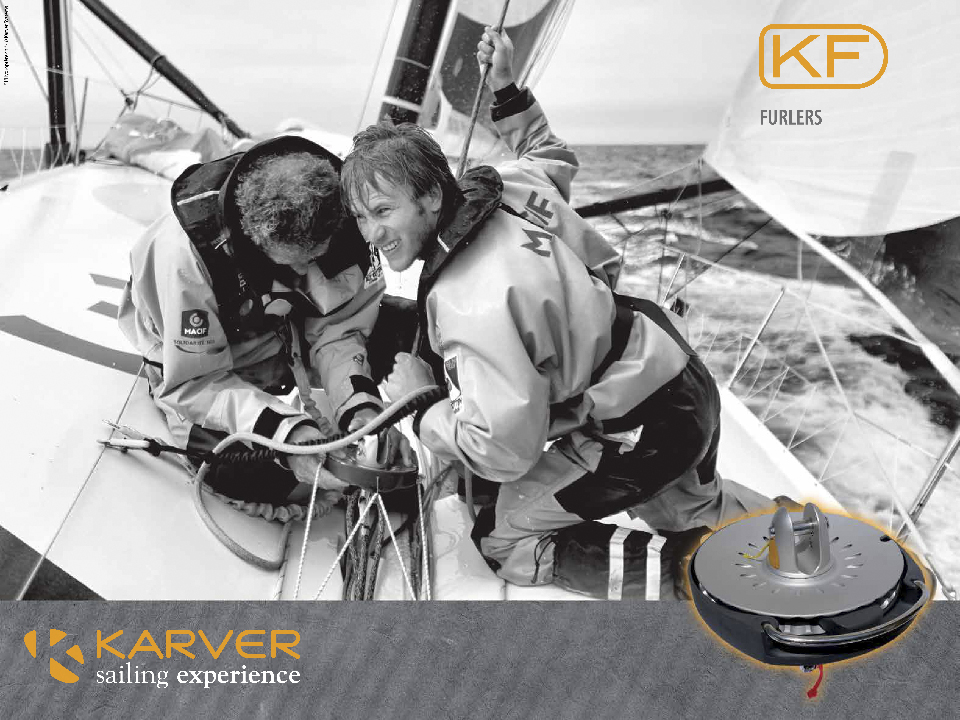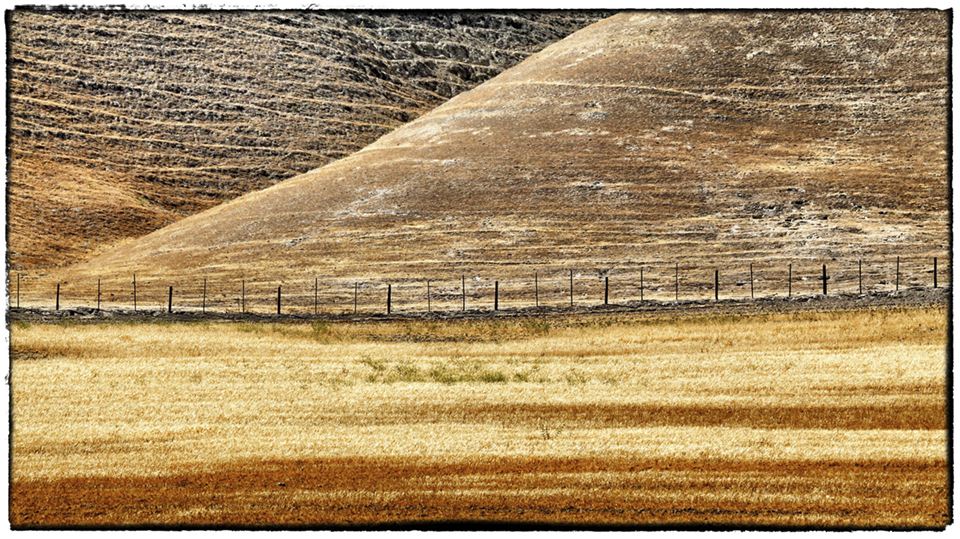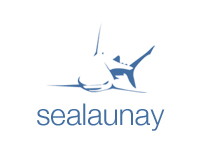 Se voir proposer une navigation à bord de l’Hydroptère est déjà extraordinaire. Mais quand en plus c’est à l’occasion d’un convoyage entre Lorient et Cowes, c’est carrément dément! Récit d’une nav’ hallucinante – surtout de nuit !- jusqu’à l’île de Wight.
Se voir proposer une navigation à bord de l’Hydroptère est déjà extraordinaire. Mais quand en plus c’est à l’occasion d’un convoyage entre Lorient et Cowes, c’est carrément dément! Récit d’une nav’ hallucinante – surtout de nuit !- jusqu’à l’île de Wight.
(Non mais tu imagines leurs têtes !) Billy rigole. On essaye de se représenter la scène. Les hommes de quart à la passerelle de leur énorme cargo labourant la Manche à une vingtaine de noeuds. Le spot qui naît soudain sur leur écran radar. Sa progression rapide. Et leurs têtes, oui, en voyant une drôle d’araignée à voile, haut perchée sur l’eau, les dépassant à près de 30 noeuds !
Il faut le reconnaître : rallier Lorient à Cowes, île de Wight, à bord de l’Hydroptère d’Alain Thébault n’est pas une expérience comme les autres. Naviguer au large, passer le raz de Sein, sillonner la Manche et traverser la nuit noire à quatre mètres au-dessus de l’eau n’est vraiment pas banal, surtout à plus de 16 noeuds de moyenne…
Tout commence mi-mai, quand Jacques Vincent me demande si un convoyage à bord de l’Hydroptère me ferait plaisir. Moi, je suis photographe professionnel, j’aime la mer, j’adore la voile : la question ne se pose même pas ! Je réponds, oui, bien sûr, à peine intimidé à l’idée de naviguer sur le voilier le plus rapide du monde – 51,36 noeuds sur 500 mètres et 50,17 noeuds sur un mille.Au moment d’embarquer à Lorient, j’ai quand même le coeur qui bat. Pour moi, l’Hydroptère est un monstre, une engin de génie qui mêle tout, un bateau, un avion, avec des nageoires de baleine en guise de foils, deux grandes pattes d’araignée reliées par l’immense toile des trampolines, des flotteurs d’hydravion, un safran semblable à ceux des Moth à foils, mais en infiniment plus grand, l’intérieur monacal d’un sous-marin, un volant de voiture pour piloter – bref, une machine digne de l’imagination de Jules Verne.
(OK, Christophe, tu es prêt pour ton premier vol ?) me lance Jacques Vincent alors que nous venons juste de quitter Lorient. (Et comment !) Le tri-foiler accèlère doucement : 10 noeuds, 12 noeuds, les mouvements s’adoucissent peu à peu, une sensation différente commence à paraître, 15 noeuds, le bateau s’élève, monte, décolle – il vole, je vole!
Le bateau glisse avec une douceur incomparable, j’ai l’impression d’être dans un ascenseur qui évoluerait constamment, mais en souplesse, d’une façon fluide, entre le rez-de-chaussée et le premier étage d’un immeuble. Rien à voir avec un trimaran de course où l’on peut ressentir, avec la vitesse, le décollage du flotteur au vent puis celui de la coque centrale, tandis qu’il s’appuie sur le flotteur sous le vent avec l’aide de ses foils.
Jacques est au volant, Billy Besson au chariot de grand-voile, Gaël Ledoux au réglage du solent, James Bird au winch de grand-voile – et moi, je reste bouche bée…
Nous sommes partis pour 300 milles d’une navigation sous haute concentration. Si le bateau a tendance à partir au lof, il faut choquer le plus rapidement possible le chariot de GV et, en cas de début d’enfournement, il faut tout aussi vite libérer la voile d’avant… , tel est le mot d’ordre qui règne à bord. Concentration, je vous dis!
Nos quarts s’installent sur le tapis volant – je passe au contrôle du chariot, puis au solent et de temps en temps au volant. Cette curieuse petite roue inclinée réclame une conduite intuitive – comme en avion j’imagine. Tout est affaire de souplesse et de réflexes. La barre est en tout cas très douce, réactive et précise – un régal. Et il est très difficile de quitter la (cabine de pilotage) ! Et puis, ce n’est pas tous les jours que j’ai l’opportunité de planer si près de mon élément préféré – j’en profite…
La nuit approche. L’instant est étonnant, d’autant que la météo joue les ruptures, entre molasse et vent établi. Je suis heureux de pouvoir capturer ce sujet sous une magnifique lune qui, de plus, simplifie la navigation et la lecture du plan d’eau, entre vagues et risées.
A l’intérieur, rien n’est bien sûr prévu pour notre (croisière) : pas de bannettes, pas de réchaud, pas de toilettes. Mon premier quart de repos a lieu dans la (capsule avant), minuscule espace situé juste avant le mât, entre les deux bras. Je dors à même le fond de la coque centrale, seul un fin tapis de mousse m’isolant du composite et de l’eau salée.
De chaque côté de mon corps, je peux ainsi sentir la compression imposée à la structure à chaque (touch and go) – c’est fou ce que ce bateau vrille et travaille. Mais quelle incroyable sensation de se reposer en vol, la surface de l’eau loin sous mon dos. Cela dit, comme toujours en multicoque et à bord des voiliers de performance, je dors les pieds en avant, car l’enfournement ou le coup de frein n’est jamais pas très loin.
Après des conditions de navigation instables et un arrêt technique à Brest, nous repartons au petit matin. La Manche est bientôt là. Cap au 70, direct sur l’entrée du Solent. Par un vent de 15 noeuds d’Est-Sud-Est, nous avalons les 150 milles en six heures à 25 noeuds de moyenne…
Après avoir coupé les rails des cargos, Cowes approche. James Bird est au volant lorsque nous passons les Needles, à l’Ouest de l’île de Wight, pour entrer dans le terrain de jeux de son enfance, le Solent. Comme souvent, l’arrivée est belle, mais triste – l’Hydroptère est un plaisir intense dont on devient très vite dépendant. Ce qui donne envie de lancer à son équipage, comme à la fin d’un voyage en avion : (J’espère très vite me revoir sur vos lignes !)
L’Hydroptère en quelques chiffres
Longueur : 18,28 mètres
Largeur : 24 mètres
Tirant d’eau : 3,50 mètres
Tirant d’eau en vol : 2 mètres
Voilure au près : 300 mètres carrés
Surface grand-voile : 195 mètres carrés
Surface solent : 105 mètres carrés
Surface trinquette : 65 mètres carrés
Longueur flotteur : 6,70 mètres
Longueur foils : 5,70 mètres
Poids en charge : 6,5 tonnes
Hauteur mât : 28 mètres
Records homologués
- 51,36 noeuds sur 500 mètres le 4 septembre 2009 à Hyères (record actuel établi le 28 octobre 2010 à Luderitz, Namibie, par le kitesurfer Rob Douglas avec 55,65 noeuds)
- 50,17 noeuds sur un mille le 8 novembre 2009, toujours à Hyères.
→ view full related gallery
No Comments — Design / Multihull / Onboard / Performance / Record / Situation / Sport / Travel / Yachting
 “If there is magic on the planet, it is contained in water.”
“If there is magic on the planet, it is contained in water.”
 The Maxi Trimaran Solo Banque Populaire VII (FRA), the 103 feet trimaran skippered by Armel Le Cléac’h in front of the MuCEM (Museum for Europe and the Mediterranean) designed by Rudy Ricciotti.
The Maxi Trimaran Solo Banque Populaire VII (FRA), the 103 feet trimaran skippered by Armel Le Cléac’h in front of the MuCEM (Museum for Europe and the Mediterranean) designed by Rudy Ricciotti. America has always been linked with the car and this drive, in the Golden State, links two of the US’s best loved cities. Highway 1 stretches along the Californian coast, and the section between San Francisco and Los Angeles is a decidedly cool trip.
America has always been linked with the car and this drive, in the Golden State, links two of the US’s best loved cities. Highway 1 stretches along the Californian coast, and the section between San Francisco and Los Angeles is a decidedly cool trip.










